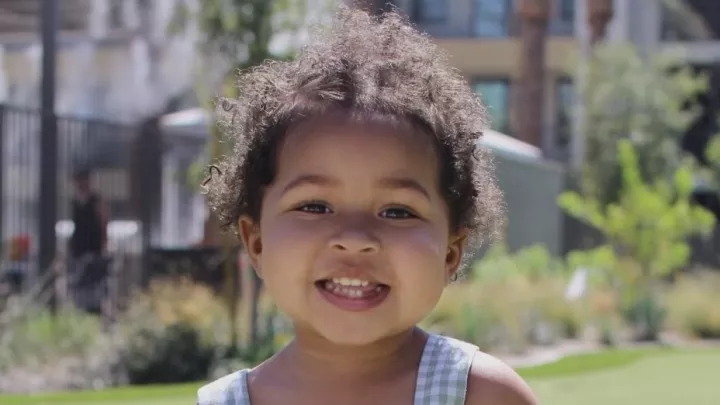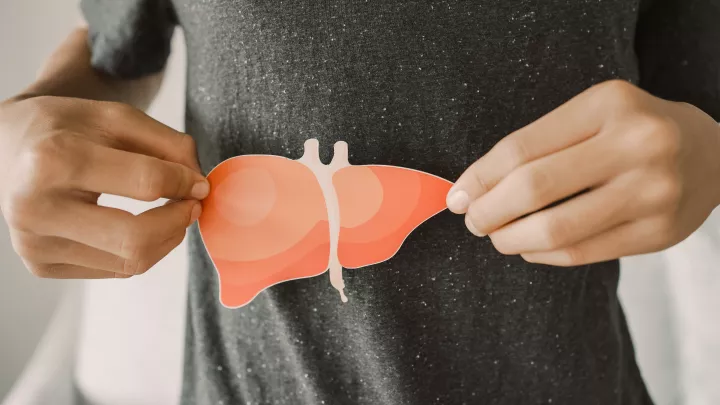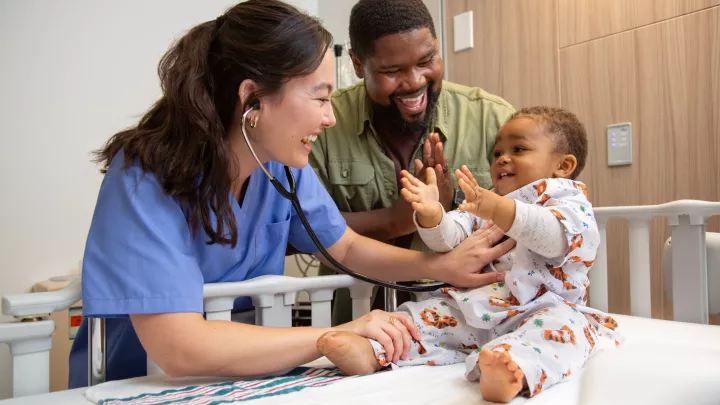Living Donor Liver Transplant
Children’s Hospital Los Angeles is among a select few pediatric medical centers in the nation performing adult-to-child living donor liver transplants. About 1 in 3 of our transplanted donor livers come from living donors—one of the highest rates in the country.
The liver is the only organ that can grow back. This regeneration process makes it possible for an adult to safely donate a liver segment to someone in need. A few months after surgery, a donor’s liver is back to its original size. The transplanted liver segment also grows to fit the child’s body.
Adult-to-Child Living Donor Liver Transplants: Why Choose Us?
Our Liver Transplant Program has one of the nation’s leading living donor liver transplant services. Research conducted by CHLA experts shows that living donor liver transplants provide better outcomes for children.
Families who choose CHLA for living donor liver transplants benefit from:
- Excellence in adult-to-child liver transplants: Living organ donors undergo liver donation surgery at Keck Medicine of USC, home to Southern California’s top living donor liver transplant program. Together, the transplant teams from CHLA and USC have unmatched expertise in adult-to-child living donor liver transplants. Learn more about the USC Living-Donor Liver Program.
- Increased access to donor livers: Even if your family has someone interested in donating part of their liver, we immediately place your child on the national liver transplant waiting list. That’s because not all potential living donors are a good match or able to donate. Placing your child on the waitlist broadens their access to the best possible match. Occasionally, a child may get a liver from a deceased donor before a living donor liver transplant takes place.
- Living donor liver transplant swaps: When a living donor isn’t a good match for the child they want to help, our team can coordinate an organ transplant swap. Your family’s living donor donates part of their liver to another child in need. In return, your child receives a liver segment that is a better match from the recipient family’s living donor. Living donors and families from across the country may participate in a living donor liver transplant swap, helping multiple children get the livers they need.
- Altruistic liver donations: Our team performed the world’s first pediatric liver transplant using a liver segment from an anonymous living donor. CHLA has a registry of altruistic donors across the country willing to donate a part of their liver to save the life of a child they’ve never met.
- Bloodless living donor liver transplants: CHLA surgeons have been performing bloodless liver transplants on children since 2001 to honor certain religious, medical or personal beliefs. Unless there’s a life-threatening emergency, the donor surgery and transplantation take place without the transfusion of blood or blood products. In 1999, USC surgeons were the first in the world to successfully perform an adult-to-adult bloodless liver transplant. Our teams work together to protect the health of the donor and child.
Benefits of living donor liver transplants
A living donor liver transplant offers many benefits, including:
- Better transplant timing: Your child’s health can worsen as they wait for a liver from a deceased donor. With a living donor, we perform transplant surgery while your child is as healthy as possible. A healthier child often recovers from transplant surgery faster and with fewer complications.
- Healthier donor livers: Living donors undergo extensive screenings to ensure their livers are healthy. They often tend to be younger and in better overall health than deceased organ donors.
- Lower risk of organ rejection: A donor liver from a relative is usually a better match than a liver from an unrelated donor. A better match means there’s less risk of your child’s body rejecting the liver and a greater chance of long-term transplant success.
- Speedier transplantation: Keck Medical Center of USC is less than 10 miles away. We coordinate the timing of the donor surgery with USC surgeons to ensure a fast transplantation process. Because the donor liver is outside of the body for a very brief period, there’s minimal cell and tissue damage to the organ.
What takes place during living liver donation?
Potential living liver donors must be at least 18 years old and in good physical and mental health. If you’re interested in donating part of your liver to a child in our care, you may undergo health screenings at the USC Living-Donor Liver Program or a hospital close to you that has a living donor program. The actual donor surgery must take place at Keck Medicine of USC to ensure a speedy transplantation.
During the screening process, potential living liver donors:
- Receive guidance from an independent donor advocate. This expert has the donor’s health—not the health of the transplant recipient—as their top priority. They make sure that donors understand the risks and benefits of liver donation.
- Undergo a psychological evaluation to assess mental health issues and ensure that organ donation is voluntary.
- Provide information about the type of postsurgical support available to them during recovery and the impact surgery might have on their work or financial situation.
- Undergo a complete physical examination that may include heart and lung tests, a gynecological examination (if appropriate), cancer screenings and other recommended tests.
- Get CT, MRI or ultrasound images of their liver and surrounding blood vessels.
Blood tests for living liver donors
Blood tests are critical to ensuring a good donor-recipient match. Doctors will check for:
- Antibody screening: This test assesses how a child’s antibodies (proteins made by their immune system) will react to the donor organ. The donor liver is considered a “foreign substance” or antigen.
- Blood type compatibility: Organ donation works best when the donor and the child have the same or compatible blood type. Donors who aren’t a good match may consider a transplant swap.
- Crossmatching: Crossmatching refers to how the child’s body will respond to the donor liver. It sounds counterintuitive, but a negative crossmatch means the donor liver is a good match. A positive crossmatch means the child’s body is likely to reject the donated liver.
- Tissue typing: This test checks for tissue matches between the donor and child’s white blood cells. There are six different tissue matches. The odds of a successful long-term transplant go up when there’s a higher number of tissue matches.
- Transmissible diseases: Doctors screen for transmissible diseases like hepatitis and HIV that would disqualify a living donor.
Become a Living Liver Donor
In cases of living liver donation for CHLA patients, we partner with Keck Medicine of USC. Please contact the USC Transplant Institute team to learn more about becoming a living liver donor for a child in need at CHLA.
Contact us
The Liver Transplant Program at CHLA welcomes new patients, referrals and second opinions. Please contact us to make an appointment.
- Phone: 323-361-5454
- Email: liver@chla.usc.edu
- Second opinions: onlinesecondopinion@chla.usc.edu or visit Online Second Opinions
Liver Transplant Care at Children's Hospital Los Angeles
Our expert surgeons perform all types of pediatric liver transplants. Learn more about the leading-edge care our Liver Transplant Program provides.


